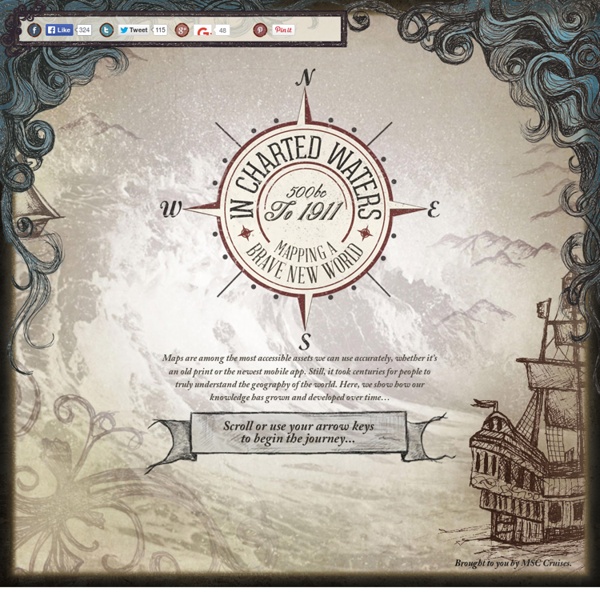Timeline of Art History -
Skip to primary content Skip to secondary content Having trouble viewing this page? Click here for a printer-friendly version. FacebookTwitterPinterestTumblrShare Email This Page AddToAny
Holocaust Timeline
Jump to: 1938 1939 1940 1941 1942 1943 1944 1945 1933 January 30, 1933 - Adolf Hitler is appointed Chancellor of Germany a nation with a Jewish population of 566,000. February 22, 1933 - 40,000 SA and SS men are sworn in as auxiliary police. February 27, 1933 - Nazis burn Reichstag building to create crisis atmosphere. February 28, 1933 - Emergency powers granted to Hitler as a result of the Reichstag fire. Terms of use: Private home/school non-commercial, non-Internet re-usage only is allowed of any text, graphics, photos, audio clips, other electronic files or materials from The History Place.
Medieval English Literature Timeline
43-600 CE: The British Invasions First came the Romans, who brought Christianity and built Hadrian's Wall. This wall protects Britain from the northern barbarians, known as the Picts. But they say "buh-bye" in 400 and hustle off in their skirty armor to protect their own capital. That means the Brits were left to subsequent waves of invasions all by their lonesome. 700: The Lindisfarne Gospels The Christian religion combines with native Celtic art forms to form the Lindisfarne Gospels. 731: The Ecclesiastical History of the English People So this monk, Bede "the Venerable," writes a history of England. 790s-900: The Viking Invasions Just when the British thought they were finally safe, the Vikings attack. 871-899: King Alfred reigns Nothing brings people together like a common enemy, and that's just what the Vikings give King Alfred the Great. His reign represents a sort of "golden age" of the Anglo-Saxon period. 700-1000: Beowulf 1066: The Norman Conquest 1154-1189: Henry II Not.
Geologic and Biological Timeline of the Earth
Astronomical and geological evidence indicates that the Universe is approximately 13,700 million years old, and our solar system is about 4,567 million years old. Earth's Moon formed 4,450 million years ago, just 50 million years after the Earth's formation. Because the composition of the rocks retrieved from the Moon by the Apollo missions is very similar to rocks from the Earth, it is thought that the Moon formed as a result of a collision between the young Earth and a Mars-sized body, sometimes called Theia, which accreted at a Lagrangian point 60° ahead or behind the Earth. A cataclysmic meteorite bombardment (the Late Heavy Bombardment) of the Moon and the Earth 3,900 million years ago is thought to have been caused by impacts of planetesimals which were originally beyond the Earth, but whose orbits were destabilized by the migration of Jupiter and Saturn during the formation of the solar system. Simplified model of the formation of the Moon (my = millions of years) Glossary
Geologic Time Scale - Geological Time Line - Geology.com
Dividing Earth History into Time Intervals Geologists have divided Earth's history into a series of time intervals. These time intervals are not equal in length like the hours in a day. Examples of Boundary "Events" For example, the boundary between the Permian and Triassic is marked by a global extinction in which a large percentage of Earth's plant and animal species were eliminated. Eons are the largest intervals of geologic time and are hundreds of millions of years in duration. Eras Eons are divided into smaller time intervals known as eras. Periods Eras are subdivided into periods. Epochs Finer subdivisions of time are possible and the periods of the Cenozoic are frequently subdivided into epochs. Our geologic time scale was constructed to visually show the duration of each time unit. Contributor: Hobart King More Geologic Time Scale Resources Find it on Geology.com More from Geology.com
Food Timeline: food history research service
Brief Timeline of American Literature and Events, 1620-1920
Brief Timeline of American Literature and Events: Pre-1620 to 1920 This timeline provides a short chronology of events in American history and literature. It is linked to course pages and bibliographies as well as to a set of more general linked resources: pages on American authors, literary movements, and American literature sites. Each author page contains a picture (if available), a bibliography (if available), links to major sites about the author, and links to works online.
Geologic time scale
Online exhibits Geologic time scale Take a journey back through the history of the Earth — jump to a specific time period using the time scale below and examine ancient life, climates, and geography. You might wish to start in the Cenozoic Era (65.5 million years ago to the present) and work back through time, or start with Hadean time (4.6 to 4 billion years ago)* and journey forward to the present day — it's your choice. [Note: "mya" means "millions of years ago"] Ways to begin your exploration: Use the links in the "time machine" below and explore a specific period that interests you.Read more about the geologic time scale, its origins and its time divisions.Find out more about plate tectonics, an important geological concept in any time period!
Civil Rights Movement Timeline (14th Amendment, 1964 Act, Human Rights Law)
Jan. 23 The 24th Amendment abolishes the poll tax, which originally had been instituted in 11 southern states after Reconstruction to make it difficult for poor blacks to vote. Summer The Council of Federated Organizations (COFO), a network of civil rights groups that includes CORE and SNCC, launches a massive effort to register black voters during what becomes known as the Freedom Summer. It also sends delegates to the Democratic National Convention to protest—and attempt to unseat—the official all-white Mississippi contingent. July 2 President Johnson signs the Civil Rights Act of 1964. Aug. 4 (Neshoba Country, Miss.)



